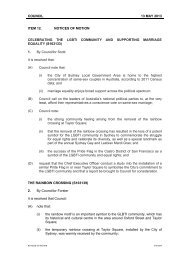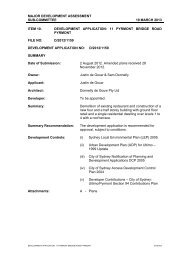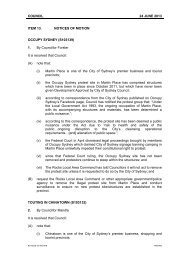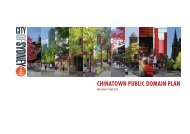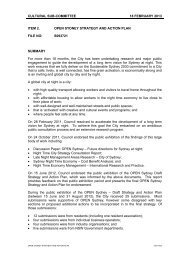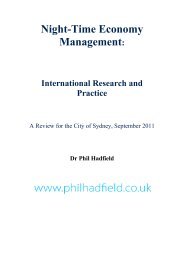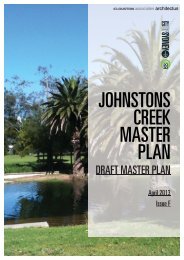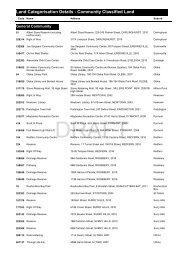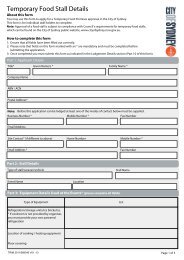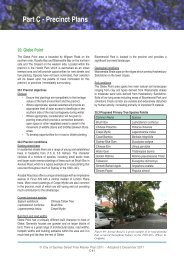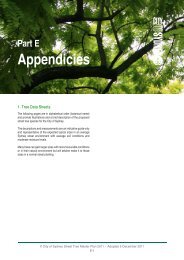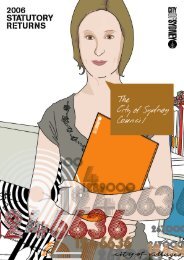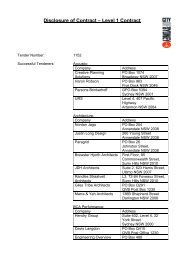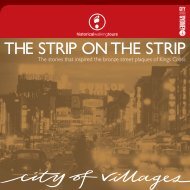Histories of Green Square - City of Sydney
Histories of Green Square - City of Sydney
Histories of Green Square - City of Sydney
Create successful ePaper yourself
Turn your PDF publications into a flip-book with our unique Google optimized e-Paper software.
Chapter 9 – A Course <strong>of</strong> Action<br />
Chapter 9 A Course <strong>of</strong> Action:<br />
Working Class Sporting Culture<br />
at Victoria Park Racecourse,<br />
between 1908 and 1943<br />
9.1 Introduction<br />
This chapter explores the sporting and popular culture <strong>of</strong> the<br />
residents <strong>of</strong> <strong>Green</strong> <strong>Square</strong> (the suburbs Waterloo, Zetland,<br />
Alexandria, Rosebery and Beaconsfield) by looking at the<br />
history <strong>of</strong> the Victoria Park Racecourse between 1908 and<br />
1943. Victoria Park Racecourse was a proprietary, or privately<br />
owned, track, one <strong>of</strong> many which dotted this region <strong>of</strong> <strong>Sydney</strong><br />
in the early twentieth century. Its history tells us about how<br />
the people <strong>of</strong> the <strong>Green</strong> <strong>Square</strong> area enjoyed and defended<br />
their leisure time in the first half <strong>of</strong> the twentieth century.<br />
The history <strong>of</strong> the racecourse and the various activities that<br />
occurred on the site are important in themselves, <strong>of</strong> course,<br />
but to understand its real significance, we need to see it in<br />
a wider social and cultural context. So this chapter will also<br />
examine the general gambling culture <strong>of</strong> the working class<br />
© Erik Nielsen<br />
Erik Nielsen<br />
and the particular type and style <strong>of</strong> racing that took place at<br />
Victoria Park. It emerges that this racecourse was in fact a site<br />
for tense class relations, a battleground for control not only <strong>of</strong><br />
working conditions, but <strong>of</strong> popular culture, and particularly<br />
working class people’s leisure time and activities. When faced<br />
with a challenge from outside their own social group, working<br />
people here adapted their culture on their own terms and for<br />
their own purposes.<br />
The days <strong>of</strong> racing at Victoria Park ended many years ago. But<br />
the legacy <strong>of</strong> this site lives on, because the racing culture that<br />
emerged from this period is not a ‘dead’ culture. If anything,<br />
it is dynamic, constantly adapting to new developments and<br />
requirements.<br />
What happened to the site after the closure in 1943? The final<br />
part <strong>of</strong> this chapter takes the story <strong>of</strong> the Victoria Park Race-<br />
Fig. 9.1 ‘Psalmist’ wins a race at Victoria Park in 1935.<br />
(Source: Sam Hood, ‘Psalmist’, Hood Collection, courtesy <strong>of</strong> the Mitchell Library, State Library <strong>of</strong> New South Wales.)<br />
71



